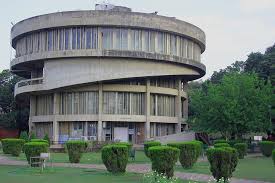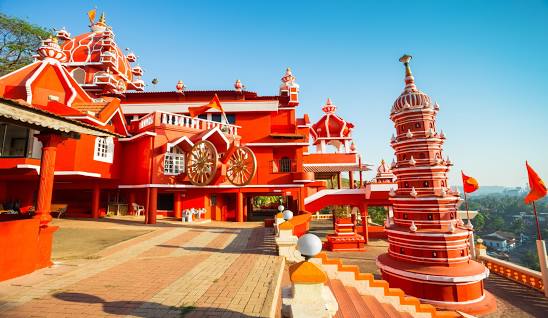ABOUT US
Medieval India

The Indian early medieval age, from 600 to 1200 CE, is defined by regional kingdoms and cultural diversity. When Harsha of Kannauj, who ruled much of the Indo-Gangetic Plain from 606 to 647 CE, attempted to expand southwards, he was defeated by the Chalukya ruler of the Deccan. When his successor attempted to expand eastwards, he was defeated by the Pala king of Bengal. When the Chalukyas attempted to expand southwards, they were defeated by the Pallavas from farther south, who in turn were opposed by the Pandyas and the Cholas from still farther south. No ruler of this period was able to create an empire and consistently control lands much beyond their core region. During this time, pastoral peoples, whose land had been cleared to make way for the growing agricultural economy, were accommodated within caste society, as were new non-traditional ruling classes. The caste system consequently began to show regional differences.
In the 6th and 7th centuries, the first devotional hymns were created in the Tamil language. They were imitated all over India and led to both the resurgence of Hinduism and the development of all modern languages of the subcontinent. Indian royalty, big and small, and the temples they patronised drew citizens in great numbers to the capital cities, which became economic hubs as well.

Temple towns of various sizes began to appear everywhere as India underwent another urbanisation. By the 8th and 9th centuries, the effects were felt in South-East Asia, as South Indian culture and political systems were exported to lands that became part of modern-day
Myanmar, Thailand, Laos, Brunei, Cambodia, Vietnam, Philippines, Malaysia, and Indonesia. Indian merchants, scholars, and sometimes armies were involved in this transmission; South-East Asians took the initiative as well, with many sojourning in Indian seminaries and translating Buddhist and Hindu texts into their languages. After the 10th century, Muslim Central Asian nomadic clans, using swift-horse cavalry and raising vast armies united by ethnicity and religion, repeatedly overran South Asia’s north-western plains, leading eventually to the establishment of the Islamic Delhi Sultanate in 1206. The sultanate was to control much of North India and to make many forays into South India.
Early modern India

In the early 16th century, northern India, then under mainly Muslim rulers, fell again to the superior mobility and firepower of a new generation of Central Asian warriors. The resulting Mughal Empire did not stamp out the local societies it came to rule. Instead, it balanced and pacified them through new administrative practices and diverse and inclusive ruling elites, leading to more systematic, centralised, and uniform rule. Eschewing tribal bonds and Islamic identity, especially under Akbar, the Mughals united their far-flung realms through loyalty, expressed through a Persianised culture, to an emperor who had near-divine status. The Mughal state’s economic policies, deriving most revenues from agriculture and mandating that taxes be paid in the well-regulated silver currency, caused peasants and artisans to enter larger markets.

By the early 18th century, with the lines between commercial and political dominance being increasingly blurred, a number of European trading companies, including the English East India Company, had established coastal outposts. The East India Company’s control of the seas, greater resources, and more advanced military training and technology led it to increasingly assert its military strength and caused it to become attractive to a portion of the Indian elite; these factors were crucial in allowing the company to gain control over the Bengal region by 1765 and sideline the other European companies. Its further access to the riches of Bengal and the subsequent increased strength and size of its army enabled it to annex or subdue most of India by the 1820s.
Modern India

Historians consider India’s modern age to have begun sometime between 1848 and 1885. The appointment in 1848 of Lord Dalhousie as Governor General of the East India Company set the stage for changes essential to a modern state.
After World War I, in which approximately one million Indians served a new period began. It was marked by British reforms but also repressive legislation, by more strident Indian calls for self-rule, and by the beginnings of a nonviolent movement of non-co-operation, of which Mahatma Gandhi would become the leader and enduring symbol. During the 1930s, slow legislative reform was enacted by the British; the Indian National Congress won victories in the resulting elections. The next decade was beset with crises:
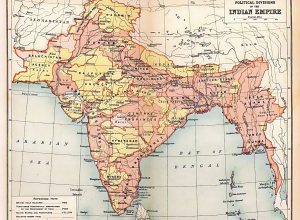
The history of independent India began when the country became an independent nation within the British Commonwealth on 15 August 1947. Direct administration by the British, which began in 1858, affected a political and economic unification of the subcontinent. When British rule came to an end in 1947, the subcontinent was partitioned along religious lines into two separate countries—India, with a majority of Hindus, and Pakistan, with a majority of Muslims. Concurrently the Muslim-majority northwest and east of British India was separated into the Dominion of Pakistan, by the Partition of India.
Geography

On the south, India projects into and is bounded by the Indian Ocean—in particular, by the Arabian Sea on the west, the Lakshadweep Sea to the southwest, the Bay of Bengal on the east, and the Indian Ocean proper to the south. The Palk Strait and Gulf of Mannar separate India from Sri Lanka to its immediate southeast, and the Maldives are some 125 kilometres (78 mi) to the south of India’s Lakshadweep Islands across the Eight Degree Channel. India’s Andaman and Nicobar Islands, some 1,200 kilometres (750 mi) southeast of the mainland, share maritime borders with Myanmar, Thailand and Indonesia. The northern frontiers of India are defined largely by the Himalayan mountain range, where the country borders China, Bhutan, and Nepal.
Its western border with Pakistan lies in the Karakoram and Western Himalayan ranges, Punjab Plains, the Thar Desert and the Rann of Kutch salt marshes. In the far northeast, the Chin Hills and Kachin Hills, deeply forested mountainous regions, separate India from Burma. On the east, its border with Bangladesh is largely defined by the Khasi Hills and Mizo Hills, and the watershed region of the Indo-Gangetic Plain.

The Ganges is the longest river originating in India. The Ganges–Brahmaputra system occupies most of northern, central, and eastern India, while the Deccan Plateau occupies most of southern India. Kangchenjunga, in the Indian state of Sikkim, is the highest point in India at 8,586 m (28,169 ft) and the world’s third highest peak. The climate across India ranges from equatorial in the far south, to alpine and tundra in the upper regions of the Himalayas. Geologically, India lies on the Indian Plate, the northern part of the Indo-Australian Plate.
The Ganges is a lifeline to millions of people who live in its basin and depend on it for their daily needs. It has been important historically, with many former provincial or imperial capitals such as Pataliputra, Kannauj, Sonargaon, Dhaka, Bikrampur, Kara, Munger, Kashi, Patna, Hajipur, Delhi, Bhagalpur, Murshidabad, Baharampur, Kampilya, and Kolkata located on its banks or the banks of tributaries and connected waterways. The river is home to approximately 140 species of fish, 90 species of amphibians, and also reptiles and mammals, including critically endangered species such as the gharial and South Asian river dolphin.The Ganges is the most sacred river to Hindus. It is worshipped as the goddess Ganga in Hinduism.
New Delhi
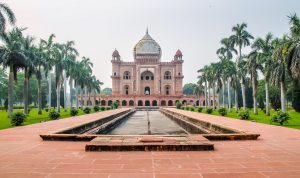
New Delhi is the capital of India and a part of the National Capital Territory of Delhi (NCT). New Delhi is the seat of all three branches of the Government of India, hosting the Rashtrapati Bhavan, Sansad Bhavan, and the Supreme Court. New Delhi is a municipality within the NCT, administered by the NDMC, which covers mostly Lutyens’ Delhi and a few adjacent areas. The municipal area is part of a larger administrative district, the New Delhi district. Although colloquially Delhi and New Delhi are used interchangeably to refer to the National Capital Territory of Delhi, both are distinct entities, with both the municipality and the New Delhi district forming a relatively small part of the megacity of Delhi.

Until December 1911 Calcutta was the capital of India during the British Rule. However, it had become the centre of the nationalist movements since the late nineteenth century, which led to the Partition of Bengal by Viceroy Lord Curzon. This created massive political and religious upsurge including political assassinations of British officials in Calcutta. The anti-colonial sentiments amongst the public led to a complete boycott of British goods, which forced the colonial government to reunite Bengal and immediately shift the capital to New Delhi.
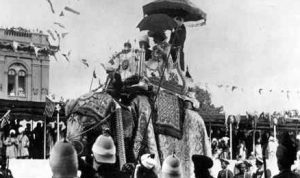
Old Delhi had served as the political and financial centre of several empires of ancient India and the Delhi Sultanate, most notably of the Mughal Empire from 1649 to 1857. During the early 1900s, a proposal was made to the British administration to shift the capital of the British Indian Empire, as India was officially named, from Calcutta on the east coast, to Delhi. The Government of British India felt that it would be logistically easier to administer India from Delhi, which is in the centre of northern India. The land for building the new city of Delhi was acquired under the Land Acquisition Act 1894.
The National Capital Region is a much larger entity comprising the entire NCT along with adjoining districts in neighbouring states, including Ghaziabad, Noida, Gurgaon and Faridabad. The foundation stone of New Delhi was laid by George V during the Delhi Durbar of 1911. It was designed by British architects Edwin Lutyens and Herbert Baker. The new capital was inaugurated on 13 February 1931 by Viceroy and Governor-General Irwin.
DEVELOPMENT SECTOR OF INDIA
Economic development in India

The economic development in India followed socialist-inspired politicians for most of its independent history, including state-ownership of many sectors; India’s per capita income increased at only around 1% annualised rate in the three decades after its independence. Since the mid-1980s, India has slowly opened up its markets through economic liberalisation. After more fundamental reforms since 1991 and their renewal in the 2000s, India has progressed towards a free market economy. The Indian economy is still performing well, with foreign investment and looser regulations driving significant growth in the country.
In the late 2000s, India’s growth reached 7.5%, which will double the average income in a decade. IMF says that if India pushed more fundamental market reforms, it could sustain the rate and even reach the government’s 2011 target of 10%. States have large responsibilities over their economies. The average annual growth rates (2007–12) for Gujarat (13.86%), Uttarakhand (13.66%), Bihar (10.15%) or Jharkhand (9.85%) were higher than for West Bengal (6.24%), Maharashtra (7.84%), Odisha (7.05%), Punjab (11.78%) or Assam (5.88%). India is the fifth largest economy in the world by nominial basis and the third largest by purchasing power parity adjusted exchange rates (PPP). On per capita basis, it ranks 140th in the world or 129th by PPP.
The economic growth has been driven by the expansion of the services that have been growing consistently faster than other sectors. It is argued that the pattern of Indian development has been a specific one and that the country may be able to skip the intermediate industrialisation led phase in the transformation of its economic structure. Serious concerns have been raised about the jobless nature of the economic growth.
Favourable macroeconomic performance has been a necessary but not sufficient condition for the significant improvement in the human development indicators. Although the rate of poverty declined after economic reforms of 1991, the improvement in human development has been less than satisfactory. For instance, child malnutrition has continued to persist (46% in 2005–6).
The progress of economic changes in India is followed closely. The World Bank suggests that the most important priorities are public sector reform, infrastructure, agricultural and rural development, removal of labour regulations, reforms in lagging states, and HIV/AIDS. For 2018, India ranked 77th in Ease of Doing Business Index. According to Index of Economic Freedom World Ranking an annual survey on economic freedom of the nations, India ranks 123rd as compared with China and Russia which ranks 138th and 144th respectively in 2014.
History
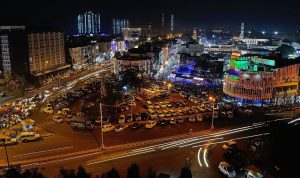
Prior to India’s Independence, from the period of 1900 to 1947, per capita income in India had either declined or stagnated. Post-Independence, Jawaharal Nehru demonstrated his willingness to compromise socialism for the perceived benefit of the country to provide financial incentives for the expansion of private enterprise. However, after the crisis of 1957, India turned towards import substitution industrialization and introduced foreign exchange. The Nehru-Mahalanobis approach, often referred to as the Second Five Year Plan, emphasized the development of basic and heavy industries as a means of accelerating economic growth. These included steel, copper, petrochemicals, paper, coal, and oil.
Mahalanobis strived for India to reach autonomy, ridding any outstanding debts. Critics disagreed with this approach, stating that World Bank’s claim of Indian export prospects being low were falsified and due to India’s inward-looking strategy, the growth opportunity of the world economy was missed. Nonetheless, over 1950–1965, India’s acceleration of per capita income growth had increased an average of 1.7%, a value not exceeded since.
The discourse on the efficacy of the Nehru-Mahalanobis Strategy is commonly contested by economists. A criticism of the approach emphasizes the lack of resource allocation in the agriculture sector. It is argued that the misbalanced weightage towards the machine-making sector contributed to the increase in food-grain prices and thus, perpetuated poverty and malnutrition. Defenders of the strategy claim that it sought to increase agricultural output by increasing the output-capital ratio. This agreeably would have been accomplished through land-reforms, something the strategy did not address, not indicating a problem with the strategy itself.
Agriculture

India ranks second worldwide in farm output. Agriculture and allied sectors like forestry, logging and fishing accounted for 18.6% of the GDP in 2005, employed 60% of the total workforce and despite a steady decline of its share in the GDP, is still the largest economic sector and plays a significant role in the overall socio-economic development of India. Yields per unit area of all crops have grown since 1950, due to the special emphasis placed on agriculture in the five-year plans and steady improvements in irrigation, technology, application of modern agricultural practices and provision of agricultural credit and subsidies since the green revolution.
India is the largest producer in the world of milk, cashew nuts, coconuts, tea, ginger, turmeric and black pepper. It also has the world’s largest cattle population (193 million). It is the second largest producer of wheat, rice, sugar, groundnut and inland fish. It is the third largest producer of tobacco. India accounts for 10% of the world fruit production with first rank in the production of banana and sapota, also known as chiku.
Main problems in the agricultural sector, as listed by the World Bank, are:
- India’s large agricultural subsidies are hampering productivity-enhancing investment.
- Overregulation of agriculture has increased costs, price risks and uncertainty.
- Government interventions in labour, land, and credit markets.
- Inadequate infrastructure and services.
Research And Development
he Indian Agricultural Research Institute (IARI), established in 1905, was responsible for the research leading to the “Indian Green Revolution” of the 1970s. The Indian Council of Agricultural Research (ICAR) is the apex body in kundiure and related allied fields, including research and education. The Union Minister of Agriculture is the President of the ICAR. The Indian Agricultural Statistics Research Institute develops new techniques for the design of agricultural experiments, analyses data in agriculture, and specialises in statistical techniques for animal and plant breeding. Prof. M. S. Swaminathan is known as “Father of the Green Revolution” and heads the MS Swaminathan Research Foundation. He is known for his advocacy of environmentally sustainable agriculture and sustainable food security.
Industrial output
India is fifth in the world in factory output. Major clusters of manufacturing are mainly concentrated in the states of Maharashtra, Gujarat, Karnataka, Tamil Nadu, Telangana and Andhra Pradesh due to relatively better infrastructure and quality of labor force. Manufacturing sector in addition to mining, quarrying, electricity and gas together account for 27.6% of the GDP and employ 17% of the total workforce. Economic reforms introduced after 1991 brought foreign competition, led to privatisation of certain public sector industries, opened up sectors hitherto reserved for the public sector and led to an expansion in the production of fast-moving consumer goods. India has emerged as the second largest manufacturer of mobile phones in the world with smart phone exports exceeding $ 10 billion in FY 2022-23. India has also emerged as the fourth largest manufacturer of automobiles behind only China, United States and Japan. India produced approximately 4.4 million cars in 2021.
Post-liberalisation, the Indian private sector, which was usually run by oligopolies of old family firms and required political connections to prosper was faced with foreign competition, including the threat of cheaper Chinese imports. It has since handled the change by squeezing costs, revamping management, focusing on designing new products and relying on low labour costs and technology. Under the Modi Government, various initiatives are taking place like Make In India campaign, to boost the Indian industries. This will help the economy to grow as budding entrepreneurs will open industries and local things will get promoted.
INFORMATION TECHNOLOGY SECTOR
IT sector
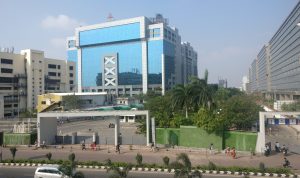
The information technology industry in India comprises information technology services and business process outsourcing. The share of the IT-BPM sector in the GDP of India is 7.4% in FY 2022. The IT and BPM industries’ revenue is estimated at US$ 245 billion in FY 2023. The domestic revenue of the IT industry is estimated at $51 billion, and export revenue is estimated at $194 billion in FY 2023. The IT–BPM sector overall employs 5.4 million people as of March 2023. In December 2022, Union Minister of State for Electronics and IT Rajeev Chandrasekhar, in a written reply to a question in Rajya Sabha informed that IT units registered with state-run Software Technology Parks of India (STPI) and Special Economic Zones have exported software worth Rs 11.59 lakh crore in 2021-22.
History
he Electronics Committee also known as the “Bhabha Committee“, created a 10-year (1966–1975) plan laying the foundation for India’s IT Service Industries. The industry was born in Mumbai in 1967 with the establishment of Tata Consultancy Services who in 1977 partnered with Burroughs which began India’s export of IT services. The first software export zone, SEEPZ – the precursor to the modern-day IT park – was established in Mumbai in 1973. More than 80 percent of the country’s software exports were from SEEPZ in the 1980s.
Within 90 days of its establishment, the Task Force produced an extensive background report on the state of technology in India and an IT Action Plan with 108 recommendations. The Task Force could act quickly because it built upon the experience and frustrations of state governments, central government agencies, universities, and the software industry. Much of what it proposed was also consistent with the thinking and recommendations of international bodies like the World Trade Organization (WTO), International Telecommunication Union (ITU), and World Bank. In addition, the Task Force incorporated the experiences of Singapore and other nations, which implemented similar programs. It was less a task of invention than of sparking action on a consensus that had already evolved within the networking community and government.
Indian IT revenues
In the contemporary world economy, India is the largest exporter of IT. The contribution of the IT sector in India’s GDP rose from 1.2% in 1998 to 10% in 2019. Exports dominate the Indian IT industry and constitute about 79% of the industry’s total revenue. However, the domestic market is also significant, with robust revenue growth.
The industry’s share of total Indian exports (merchandise plus services) increased from less than 4% in FY1998 to about 25% in FY2012. The technologically-inclined services sector in India accounts for 40% of the country’s GDP and 30% of export earnings as of 2006, while employing only 25% of its workforce, according to Sharma (2006).
Indian IT Revenues
In the contemporary world economy, India is the largest exporter of IT. The contribution of the IT sector in India’s GDP rose from 1.2% in 1998 to 10% in 2019. Exports dominate the Indian IT industry and constitute about 79% of the industry’s total revenue. However, the domestic market is also significant, with robust revenue growth.
The industry’s share of total Indian exports (merchandise plus services) increased from less than 4% in FY1998 to about 25% in FY2012. The technologically-inclined services sector in India accounts for 40% of the country’s GDP and 30% of export earnings as of 2006, while employing only 25% of its workforce, according to Sharma (2006). According to Gartner, the “Top Five Indian IT Services Providers” are Tata Consultancy Services, Infosys, Wipro, Tech Mahindra, and HCL Technologies.
The IT and BPM industry’s revenue is estimated at US$194 billion in FY 2021, an increase of 2.3% YoY. The domestic revenue of the IT industry is estimated at US$45 billion and export revenue is estimated at US$150 billion in FY 2021. The IT industry employed almost 2.8 million employees in FY 2021. The IT–BPM sector overall employs 5.4 million people as of March 2023.
Major information technology hubs
Bangalore

Bangalore is a global technology hub and is India’s biggest tech hub. As of fiscal 2016–17, Bangalore accounted for 38% of total IT exports from India worth $45 billion, employing 10 lakh people directly and 30 lakh indirectly. The city is known as the Silicon Valley of India .
Bangalore is also known as the startup capital of India ; the city is home to 44 percent of all Indian unicorn startup companies as of 2020.
Hyderabad

Hyderabad – known for the HITEC City or Cyberabad – is India’s second largest information technology exporter and a major global IT hub, and the largest bioinformatics hub in India. Hyderabad has emerged as the second largest city in the country for software exports pipping competitors Chennai and Pune.
Chennai

Chennai’s FinTech City is also located in a major IT hub, which gives it access to a large pool of skilled workers. Moreover, Chennai’s FinTech City also has a number of other potential benefits such as the city is located in a time zone that is convenient for businesses in both the Americas and Europe.
Chennai is also home to the top 7 out of 15 tech companies in India!
Largest Indian IT companies
Tata Consultancy Services

TATA Consultancy Services Limited (TCS) is an Indian multinational information technology (IT) services and consulting company with its headquarters in Mumbai, Maharashtra. It is a part of the Tata Group and operates in 150 locations across 46 countries. In July 2022, it was reported that TCS had over 600,000 employees worldwide. TCS is the second largest Indian company by market capitalization and is among the most valuable IT service brands worldwide, and is the top Big Tech (India) company. In 2015, TCS was ranked 64th overall in the Forbes “World’s Most Innovative Companies” ranking, making it one of the highest-ranked IT services companies and a top Indian company. As on Jun 2023, it is the world’s 2nd largest IT employer.
As of 2018, it is ranked eleventh on the Fortune India 500 list . In September 2021, TCS recorded a market capitalization of US$200 billion, making it the first Indian IT tech company to do so. In December 2022, the market cap was Rs. 11,71,481.89 crore. In 2016–2017, parent company Tata Sons owned 72.05% of TCS[20] and more than 70% of Tata Sons’ dividends were generated by TCS.
Infosys

Infosys Limited is an Indian multinational information technology company that provides business consulting, information technology and outsourcing services. The company was founded in Pune and is headquartered in Bangalore.Infosys is the second-largest Indian IT company, after Tata Consultancy Services, by 2020 revenue figures.
On 24 August 2021, Infosys became the fourth Indian company to reach US$100 billion in market capitalization. It is one of the top Big Tech (India) companies.
Wipro

Wipro is an Indian multinational corporation that provides information technology, consultant and business process services. It is one of the leading Big Tech companies.Wipro’s capabilities range across cloud computing, computer security, digital transformation, artificial intelligence, robotics, data analytics, and other technology consulting services to customers in 167 countries.
Tech Mahindra

Tech Mahindra is an Indian multinational information technology services and consulting company. Part of the Mahindra Group, the company is headquartered in Pune and has its registered office in Mumbai. Tech Mahindra is a US$6.0 billion company with over 158,000 employees across 90 countries . The company was ranked #5 in India’s IT firms and overall #47 on Fortune India 500 list for 2019.[8]
On 25 June 2013, Tech Mahindra announced the completion of a merger with Mahindra Satyam. Tech Mahindra is one of the top Big Tech (India) companies.[9] Tech Mahindra has 1,262 active clients as of June 2022.
HCLTech

HCL Technologies Limited , HCLTech (formerly Hindustan Computers Pvt. Limited), is an Indian multinational information technology (IT) services and consulting company headquartered in Noida. The founder of HCLTech is Shiv Nadar. It emerged as an independent company in 1991 when HCL entered into the software services business. The company has offices in 52 countries and over 225,944 employees.
HCLTech is on the Forbes Global 2000 list. It is among the top 20 largest publicly traded companies in India with a market capitalization of ₹281,209 crore as of March 2022. It is one of the top Big Tech (India) companies.
INDIAN POLITICIANS MEMBER
TOURISM PLACES
Goa

Vagator Beach
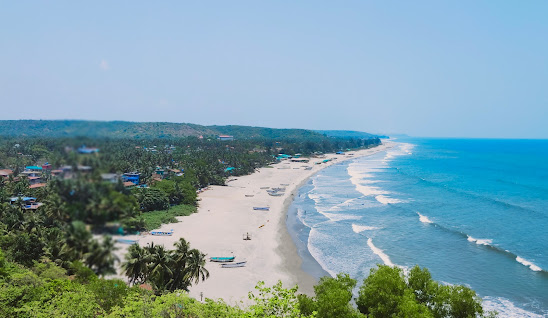
Arambol
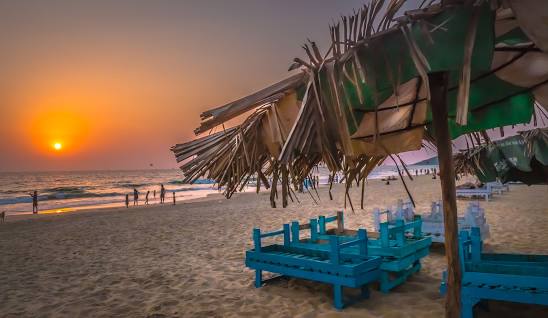
Calangute
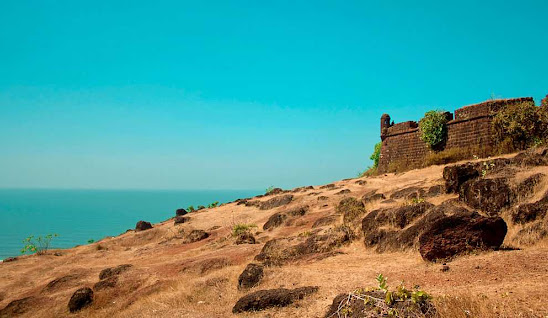
Morjim
EDUCATION

Banaras Hindu University

University of Delhi

Indian Institute of Science Bengaluru
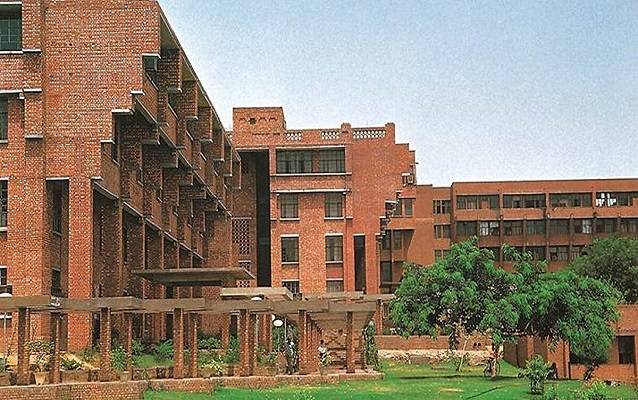
Jawaharlal Nehru University
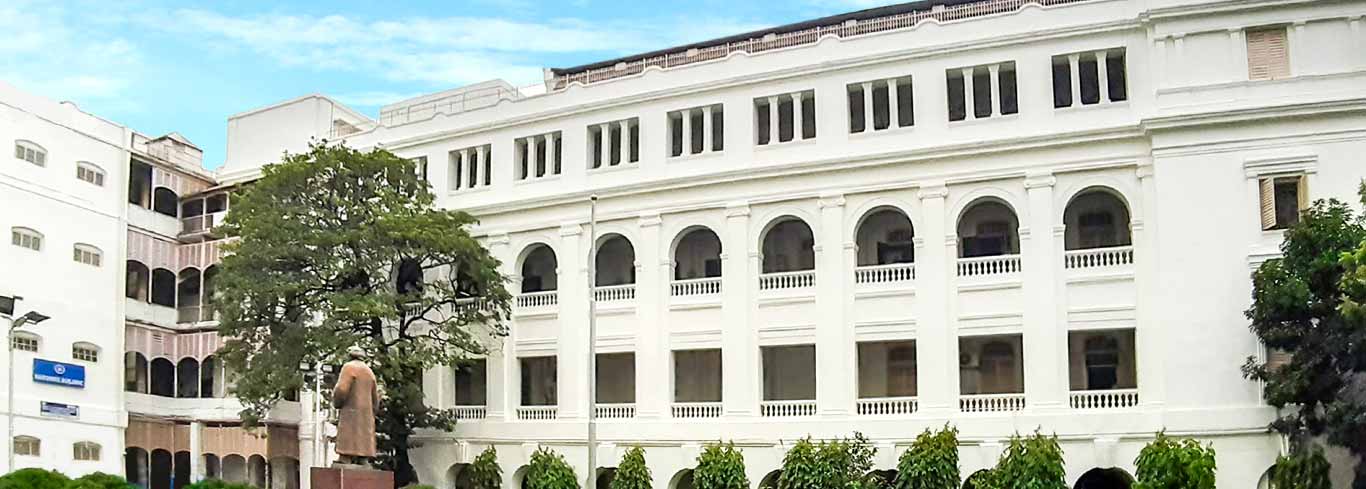
University of Calcutta
